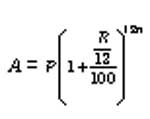Reliance Jio MNP – Port to Jio Guide: Starting 5th September users of other mobile networks like Airtel, Idea, Vodafone, Bsnl, Aircel, Docomo, etc. can switch to Reliance Jio and avail unlimited Data, Jio Preview offer, and other benefits till 31st Dec 2016. After that, users can enjoy free Voice Calls when they buy Jio 4G data packs.
Reliance Jio is also offering Unlimited SMS, Hotspot data and other benefits like extra 25% data for students, No Blackout days and no roaming charges across India. With MNP (Mobile Number Portability) service available, users of any Telecom service provider can quickly switch to Jio without much hassle. Users don’t have to change their phone number. The Jio MNP will be live from 5th September. Just follow the steps below to port your number to Reliance Jio.
How to Port to Jio
Reliance jio will be launching commercially on 5th september 2016. If you are interested in porting your current sim to jio then you will need to generate your unique porting code from your current operator.
To get your porting code you will need to send a sms to 1900. Type ‘MNP XXXXXXXXXX’ where XXXXXXXXXX is your current mobile number and send the message to 1900.
You can then visit your nearest Reliance digital or DX Mini store with your aadhaar card or similar proof to get your current sim ported to jio.
Follow below steps for in detail information.
Steps To Port Your Number To Jio 4G
Note: Users of any Indian Telecom Service provider like Airtel, Vodafone, Idea, BSNL, others can port their number to Jio 4G SIM Card through MNP.
1. Send an SMS “PORT Mobile Number” to 1900. You have to send the SMS from the same mobile number that you want to port to Jio 4G. Normal, SMS Charges Apply.
Example – PORT 9876543210
2. After sending the SMS, you should receive an SMS with UPC (Unique Port Code). The UPC is valid for 15 Days only. Now, Download MyJio app from Play Store and generate offer code.
3. Visit the Nearest Reliance Digital or Xpress Mini Store or Preferred Jio retailer or prominent multi-brand Jio stores and fill the customer application form. Also, you will have to submit the required documents like Aadhar Card, Passport size photo, Address proof. Very soon, Reliance will be implementing Jio eKYC Signup.
4. A new Jio 4G Sim Card will be given to you on-the-spot. As per the Telecom regulations of India, your number will remain with your current service provider for the next 5 Days.
5. After 5-7 Days, you can insert the New and Activated Jio Sim Card in your 4G smartphone and enjoy the Jio Preview offer and other benefits.
You will have to pay Rs. 19 For the Process to get done.
Once the porting process is complete, your current SIM card will show “No Service” and you can insert new Jio Sim card. `
Same steps are required for Airtel to Jio Port, Idea to Jio Port, Vodafone to Jio Port, Docomo to Jio Port, BSNL to Jio port or any other service provider. Please note that the UPC code is valid only for 15 Days, and you have to Port your mobile number before the Unique Port Code expires.
All you have to do is, generate the UPC code from your current mobile number and head over to nearest Reliance Digital store and get your Jio 4G Sim for free.
Reliance Jio will be officially launched on 5th September, and the commercial operations of Jio will start from 31st December. Starting Sep 5, All Jio Premium Services and Apps like JioPlay, JioBeats, JioMoney will be available free for all users under Jio Welcomer offer.
Reliance had also cut down the price of New LYF Handsets and JioFi WiFi device. On an average, all the Indian Telecom operators charge Rs 250 per GB, but Jio is offering Data at Rs 50 Per GB. Mr. Mukesh Amabni, CEO of Reliance stated that Jio 4G network would cover 90 percent of Indian Population by March 2017.












 the sum of the probabilities of success and failure is 1. Also, 0
the sum of the probabilities of success and failure is 1. Also, 0  the odds against E are
the odds against E are
 ...(i)
...(i) ...(ii)
...(ii)